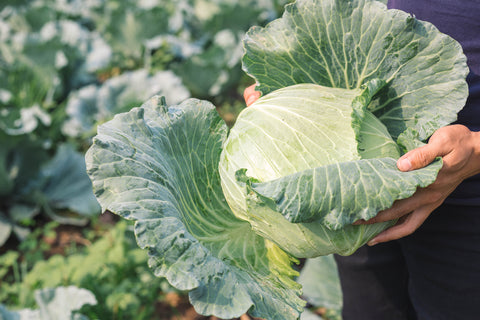Embark on a journey to the summit of horticultural elegance as we delve into the world of Alpine Gardens, where mountainous beauty meets the artistry of gardening. In this blog, we will explore the unique charm of alpine plants, the enchanting allure of high-altitude landscapes, and how you can bring the majesty of the mountains right to your doorstep. Discover the secrets to creating an Alpine Garden that captures the essence of alpine ecosystems while thriving in the comfort of your home. The following content also has some reference value for raised garden beds.
Unveiling the Alpine Beauty: A Glimpse into High-Altitude Landscapes
- The Magic of Alpine Ecosystems:
Alpine ecosystems, nestled at high altitudes, are known for their breathtaking beauty and unique plant life. Characterized by rocky terrains, sparse vegetation, and extreme weather conditions, these environments host a variety of resilient plants that have adapted to the challenges of mountainous regions.
- Unique Alpine Flora:
Alpine plants, often small in stature but big in character, have evolved to thrive in harsh conditions. These include vibrant wildflowers like gentians, saxifrages, and edelweiss, as well as hardy evergreen shrubs such as junipers and dwarf pines. The diversity of alpine flora contributes to the mesmerizing tapestry that graces mountain landscapes.
- Adaptations to Harsh Environments:
Surviving in alpine environments requires special adaptations. Many alpine plants exhibit features like woolly leaves to protect against extreme temperatures, low-growing habits to avoid harsh winds, and deep root systems to anchor themselves in rocky soils. These adaptations contribute to the resilience and enduring charm of alpine flora.
Creating an Alpine Garden at Home: Elevating Your Outdoor Space
- Choose the Right Plants:
Selecting the right plants is the foundation of an Alpine Garden. Look for species that thrive in well-draining soil, as good drainage is crucial for replicating the conditions of mountainous terrains. Alpine plants like Lewisia, Sedum, and Phlox subulata are excellent choices, offering both color and hardiness.
- Mimic Rocky Terrains:
Alpine environments are often characterized by rocky terrains. Replicate this natural setting in your garden by incorporating rocks, pebbles, or gravel. Create raised beds or rockeries to mimic the slopes of high-altitude landscapes, providing the perfect backdrop for your alpine treasures.
- Pay Attention to Soil Quality:
Alpine plants prefer soil that is lean and well-draining. Amend your soil with sand or grit to improve drainage and mimic the rocky conditions of their native habitats. Avoid rich, heavy soils that can lead to waterlogged roots, a condition that alpine plants generally don't tolerate.
- Embrace Container Gardening:
If you have limited outdoor space, consider creating an Alpine Garden in containers. This allows you to control the soil mix, ensure proper drainage, and experiment with unique plant arrangements. Containers also provide mobility, allowing you to move your alpine garden to optimal sunlight conditions.
- Play with Elevation:
Incorporate elevation into your Alpine Garden design. Use terraced planters or raised beds to create different levels, mimicking the undulating slopes of mountain landscapes. This not only adds visual interest but also provides opportunities to showcase various alpine species.
- Mindful Watering:
Alpine plants are adapted to the lean conditions of their native habitats, and excessive watering can be detrimental. Use water conservatively and let the soil dry between watering sessions. This mimics the natural ebb and flow of moisture in alpine environments.
- Alpine Rock Garden Features:
Enhance the authenticity of your Alpine Garden by incorporating rock garden features. Use natural-looking rocks to create crevices and pockets where alpine plants can thrive. This not only adds aesthetic appeal but also provides microhabitats for these unique flora.
Maintenance and Enjoyment: Tending to Your Alpine Haven
- Pruning and Deadheading:
Regular pruning and deadheading are essential for maintaining the compact and tidy appearance of many alpine plants. Remove spent flowers to encourage continuous blooming and trim back any leggy growth to maintain a well-rounded form.
- Winter Protection:
While alpine plants are adapted to cold conditions, some may benefit from a layer of mulch during winter to protect their roots from extreme freeze-thaw cycles. Additionally, ensure proper drainage to prevent waterlogged soil, which can lead to root rot.
- Seasonal Adjustments:
Alpine plants may have specific seasonal requirements. Some may benefit from a winter dormancy period, while others may thrive in the cooler temperatures of spring and fall. Research the needs of your chosen alpine species and make seasonal adjustments accordingly.

Conclusion: Reaching New Heights in Your Garden
As you cultivate your Alpine Garden, you embark on a journey to reach new heights in your gardening endeavors. The charm of alpine plants, the mimicry of mountainous landscapes, and the careful tending of your garden bring a touch of mountain magic to your outdoor space. Whether you have a sprawling garden or a compact balcony, an Alpine Garden allows you to elevate nature right at your doorstep. With resilience and beauty reminiscent of high-altitude ecosystems, your Alpine Garden becomes a sanctuary of mountainous splendor.









